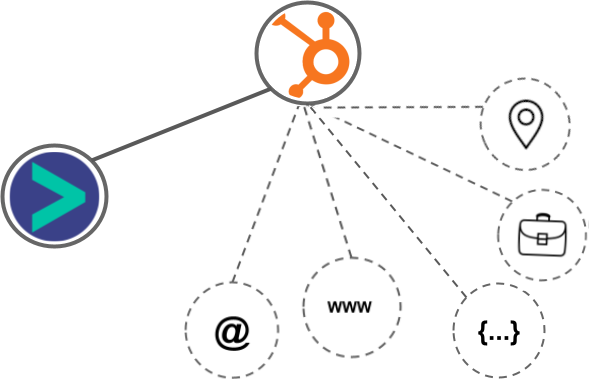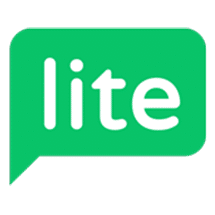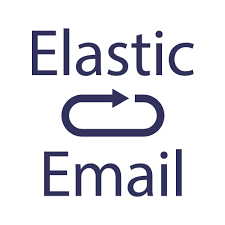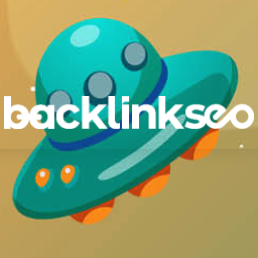HubSpot Marketing vs Campaign Monitor
Hyperise integrates with 100's of sales and marketing tools, many of which are in the Marketing Automation category. With so many to choose from it's sometimes hard to know which is best, but don't worry, we've got your covered.
In this comparison guide we're going to look at the Highlights, Pros, Cons and Pricing of HubSpot Marketing and Campaign Monitor. We'll also delve into the details of which offers the best personalization options within Marketing Automation, with there respective Hyperise integrations

HubSpot Marketing
Pricing: HubSpot offers several pricing options for its marketing automation platform. Here is a summary: 1. Free: Provides limited features like forms, contact management, lead capture and tracking, email marketing, and basic analytics. 2. Starter: Cost $50 per month and includes more features than the free plan, such as ad management, blogging, and social media. 3. Professional: Cost $800 per month and includes additional features such as marketing automation, A/B testing, smart content, and more.
Vs

Campaign Monitor
Pricing: Campaign Monitor offers several pricing plans based on the number of subscribers you have and the features you need. - Basic plan: Starting at $9 per month for up to 500 subscribers, this plan includes email marketing automation, email templates, and basic reporting features. - Unlimited plan: Starting at $29 per month for unlimited subscribers, this plan includes all the features of the Basic plan, plus advanced segmentation, behavioral and event-based automation, and priority support.
HubSpot Marketing vs Campaign Monitor Highlights
HubSpot is a comprehensive inbound marketing and sales automation platform that offers email marketing, lead management, social media management, and more to help businesses attract and engage with customers. It provides an all-in-one approach to marketing automation, allowing businesses to track leads and customers across multiple channels and touchpoints, and personalize their messages based on their interests and behaviors.
On the other hand, Campaign Monitor is a dedicated email marketing platform that focuses solely on email campaigns. It offers a user-friendly interface, drag-and-drop email builder, and pre-designed templates, making it easy to design and send professional-looking emails. It also has advanced features such as automation workflows, A/B testing, and segmentation to help businesses optimize their email campaigns and improve their open and click-through rates.
In summary, HubSpot is a more comprehensive marketing automation platform that encompasses email marketing while Campaign Monitor focuses solely on email marketing. HubSpot is ideal for businesses looking for a complete solution to manage all their marketing efforts while Campaign Monitor is suitable for businesses that prioritize email marketing and want advanced functionality for their campaigns.
HubSpot Marketing vs Campaign Monitor Pros
HubSpot Marketing Pros
- Here are some potential pros for HubSpot compared to Campaign Monitor:
- HubSpot is a comprehensive marketing automation platform, while Campaign Monitor is primarily focused on email marketing.
- HubSpot offers a wide range of features beyond email marketing, such as social media management, CMS, CRM, landing pages, forms, and more.
- HubSpot's platform is designed to seamlessly integrate all of these features and data points, allowing for a unified view of customers and prospects.
- HubSpot has a robust set of analytics and reporting tools that enable users to track performance across channels and campaigns.
- HubSpot's pricing model is based on a set of all-in-one tiers, whereas Campaign Monitor's pricing is based on the number of contacts in a user's database, which can lead to unpredictable costs.
- HubSpot has a strong focus on education and support, offering resources such as certifications, a knowledge base, and a community forum to help users master the platform and share best practices. Campaign Monitor also offers support, but may not have the same depth of resources.
- HubSpot is generally considered a more enterprise-level marketing automation platform, while Campaign Monitor may be better suited to smaller businesses or organizations with simpler marketing needs.
Campaign Monitor Pros
- User-friendly email editor
- Advanced reporting and analytics for email campaigns
- Easy-to-use email automation workflows
- Comprehensive list management features
- Affordable pricing plans for small to medium-sized businesses
- Extensive integration capabilities with popular websites and CRMs
- Dedicated customer support team
- Simple and streamlined user interface for email marketing tasks.
HubSpot Marketing vs Campaign Monitor Cons
HubSpot Marketing Cons
- Hubspot is a more expensive option compared to Campaign Monitor
- The user interface of Hubspot can be overwhelming for beginners and takes some time to learn
- Hubspot's email marketing features are not as advanced as Campaign Monitor's, particularly when it comes to template design, personalization, and segmentation
- Hubspot's workflows and automation options are limited in comparison to Campaign Monitor, particularly for email campaigns
- Hubspot's reporting capabilities can be complex and difficult to navigate, while Campaign Monitor's reporting is more straightforward and user-friendly.
Campaign Monitor Cons
- Here are some cons of Campaign Monitor when compared to HubSpot:
- Campaign Monitor primarily focuses on email marketing whereas HubSpot offers a broader range of marketing automation features.
- Campaign Monitor does not have advanced analytics and reporting features compared to HubSpot.
- Campaign Monitor lacks the ability to create landing pages, update website content, and manage social media profiles, which is achievable in HubSpot.
- Campaign Monitor does not have an in-built CRM feature as HubSpot does, which means you would need to integrate with a third-party CRM tool to manage your customer relationship processes.
- Campaign Monitor does not have a lead scoring or lead nurturing features, which are important features in marketing automation found in HubSpot.
HubSpot Marketing & Campaign Monitor Hyperise Integrations
HubSpot Marketing uses the HTML code embed method to integrate with Hyperise, giving a simple way to add personalized images to your messages.
HubSpot Marketing makes the following data points available to Hyperise, to enable personalization in images used in outreach and linked out to your personalized website landing pages.

- Using business Email passed from HubSpot Marketing, Hyperise is able to enrich business logo and website screenshots. In some cases, with a business Email we're also able to enrich profile images, subject to the business email having a publicly available profile.
- Using business Website passed from HubSpot Marketing, Hyperise is able to enrich business logo and website screenshots.
- Business name
- Job title
- City
- Country
HubSpot Marketing Integration Guide
Campaign Monitor uses the HTML code embed method to integrate with Hyperise, giving a simple way to add personalized images to your messages.
Campaign Monitor makes the following data points available to Hyperise, to enable personalization in images used in outreach and linked out to your personalized website landing pages.

- Using business Email passed from Campaign Monitor, Hyperise is able to enrich business logo and website screenshots. In some cases, with a business Email we're also able to enrich profile images, subject to the business email having a publicly available profile.
Campaign Monitor Integration Guide

 vs
vs  vs
vs  vs
vs  vs
vs 

 vs
vs  vs
vs  vs
vs 



 vs
vs  vs
vs  vs
vs  vs
vs  vs
vs  vs
vs  vs
vs 








 vs
vs  vs
vs  vs
vs 





























